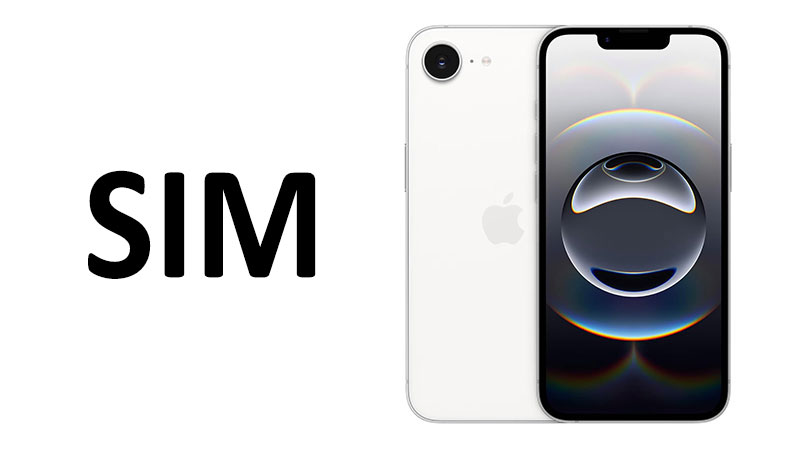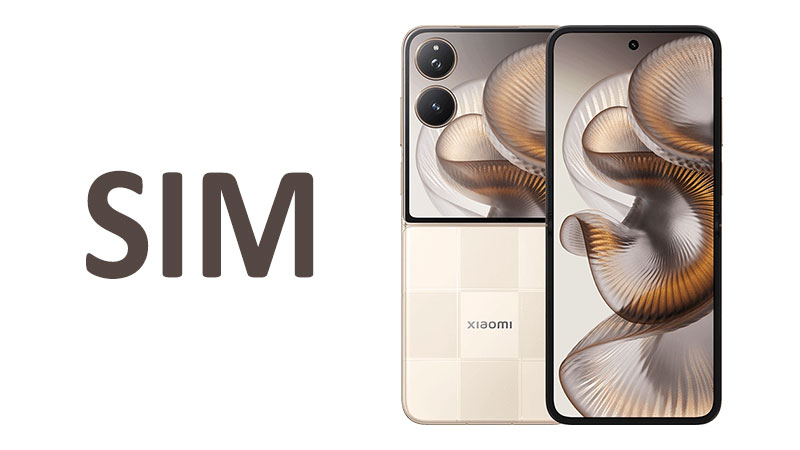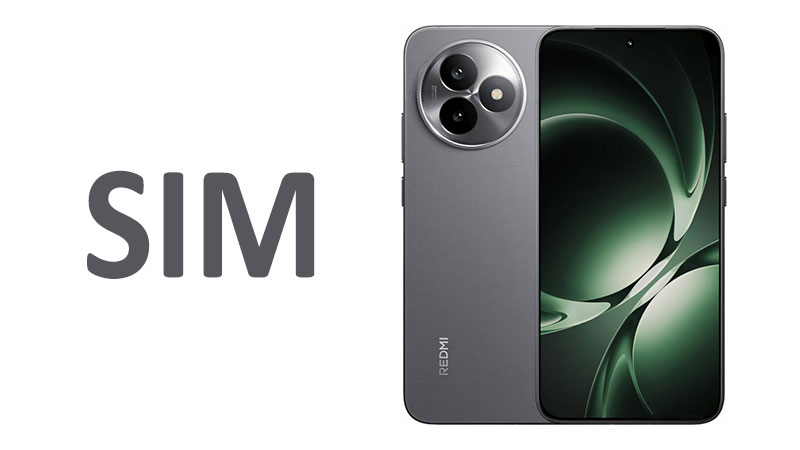The Apple iPhone 16e SIM capabilities and connectivity suite are tailored for efficiency and global use. This new device balances modern wireless standards with practical cost considerations. Understanding the nuances of its eSIM, Dual-SIM options, and integrated network technologies is essential. This comprehensive article delves into every aspect of the iPhone 16e’s communication features. It helps potential buyers grasp its true performance and utility. The iPhone 16e promises reliable access to the digital world. It does this while streamlining the user experience.
The Foundation of Mobile Identity: SIM Technology
Apple continues its forward momentum with eSIM technology in the iPhone 16e. The device’s SIM architecture provides flexibility for users worldwide. It offers different configurations to meet varying regulations and market demands. This layered approach is characteristic of Apple’s global strategy. It ensures the iPhone 16e is adaptable across major regions. The core of its identity management relies on the electronic SIM, or eSIM.
Detailed Global SIM Configurations
The available Subscriber Identity Module (SIM) setup changes based on the country of purchase. This is a crucial point for users who travel frequently or purchase their phone abroad. Apple customizes the hardware to best suit local carrier environments.
International Model: Nano-SIM and eSIM Integration
The international version of the iPhone 16e offers a highly flexible setup. It supports one traditional physical Nano-SIM card. In addition, it supports multiple stored eSIM profiles. The device is capable of running a maximum of two active lines at any given time. Users can choose to use the physical Nano-SIM plus one active eSIM. They can also use two active eSIMs simultaneously. This popular feature is known as Dual-SIM functionality. It simplifies life for users who need separate numbers for work and personal use. It also benefits travelers who manage local and home network subscriptions. This configuration provides the best balance of digital convenience and traditional access.
USA Model: Fully Embracing the eSIM Standard
In the United States, the iPhone 16e adopts a purely digital SIM approach. This model is engineered to be eSIM-only. It means the device does not contain a physical SIM card tray. Users can store eight or more eSIM profiles on the phone. However, only two of these profiles can be active simultaneously for Dual-SIM use. This shift to eSIM-only offers several key advantages. It improves the device’s structural integrity against water damage. It also enhances security against unauthorized physical access. This move reflects the direction the US mobile industry is taking.
China Model: Dual Physical SIM Mandate
Apple acknowledges the distinct market requirements of mainland China. Therefore, the iPhone 16e model sold in China includes a tray for two physical Nano-SIM cards. This allows for dual physical SIM use. The eSIM feature is often disabled or not available in this region. This hardware modification is necessary to comply with local carrier and consumer preferences. The Dual Nano-SIM configuration remains essential for the Chinese market. It allows users to manage multiple local network providers easily.
Specialized Comparisons: iPhone 16e SIM vs. Previous Models
The iPhone 16e maintains the Dual-SIM setup seen in previous generations. However, it solidifies the push toward eSIM dominance. Compared to the older iPhone 14, the 16e continues the eSIM-only trend established by the iPhone 15 series in the US. This commitment to digital SIMs is consistent.
When comparing the eSIM to the traditional Nano-SIM, flexibility stands out. A physical SIM needs manual insertion or removal. An eSIM is activated instantly via a digital process, such as a QR code scan. Moreover, a Nano-SIM only holds one network identity. The iPhone 16e can store many eSIM profiles. This makes switching carriers simple and quick. The integrated nature of the eSIM also prevents it from being physically lost or damaged. This offers a clear advantage in device security and longevity.
Pros and Cons of the eSIM-Centric Design
The focus on the embedded SIM in the iPhone 16e brings many user benefits. Yet, it also introduces a few limitations that buyers should consider carefully. These points affect overall user experience and global usability.
Pros of eSIM Technology
- Enhanced Device Security: The eSIM is permanently embedded within the phone. This prevents physical removal by thieves if the device is stolen. It improves the effectiveness of anti-theft tracking features.
- Efficient Dual-SIM Usage: Users can easily run two distinct phone numbers on one device. This is perfect for separating business and personal communications.
- Streamlined Activation: Activating a new cellular plan is fast and digital. There is no need to wait for a physical card from the carrier.
- Better Resistance: Eliminating the physical SIM tray slot improves the phone’s resistance to dust and water ingress. This enhances the overall durability rating.
- Internal Space Saving: The removal of the SIM slot frees up precious internal space. Engineers can then use this space for other key components like batteries.
Cons of eSIM Technology
- Transfer Complications: Moving an eSIM profile to a new device can sometimes be challenging. The process often requires direct interaction and support from the network carrier.
- Limited Global Support: While growing, eSIM is still not universally adopted by all international carriers. Travelers might face issues in countries with less modern network infrastructures.
- Troubleshooting Time: Physical SIMs are easy to swap out to diagnose network problems. Troubleshooting an eSIM fault usually requires more complex digital steps and carrier assistance.
Important Points for Buyers Regarding SIM
Prospective buyers must confirm the SIM configuration of their purchase location. A phone bought in the USA will not have a physical SIM slot. Therefore, global travelers relying on inexpensive foreign physical SIM cards must ensure their destination carriers support eSIM activation. Furthermore, business users should actively utilize the Dual-SIM feature. It allows for seamless management of multiple lines on a single, powerful device. Frequent international travelers can benefit immensely. They can store multiple international data plans and activate them instantly upon arrival. This feature delivers major cost and convenience benefits for global connectivity.
Cellular Network and Next-Generation Performance
The iPhone 16e is built to handle the full spectrum of cellular communication. It supports legacy networks for maximum compatibility. Simultaneously, it leverages modern standards for high-speed data.
Comprehensive Cellular Technology Support
The iPhone 16e supports essential legacy communication protocols. These include GSM, HSPA, and LTE. This broad compatibility ensures the phone can connect to a network virtually anywhere in the world. This is crucial for global coverage and roaming stability. The device’s primary focus, however, is on the high performance of 5G networks.
The 5G capability is the key differentiator for cellular technology. 5G offers significantly faster data download and upload speeds than 4G LTE. It also delivers dramatically reduced network latency. Low latency is crucial for lag-free experiences. These include cloud gaming, high-quality video conferencing, and real-time collaboration tools. The iPhone 16e is engineered to efficiently utilize available 5G bandwidth. This ensures a consistent and high-speed mobile internet experience.
Specialized Comparison: 5G Performance on the ‘e’ Model
The 5G modem in the iPhone 16e is highly capable. It offers performance on par with other modern smartphones. Compared to an older 4G device, the speed difference is enormous. When compared to the iPhone 16 Pro Max, the “e” model focuses on Sub-6GHz 5G coverage. It may lack some of the advanced millimeter-wave (mmWave) bands. These mmWave bands provide ultra-fast speeds only over short distances in select cities. The 16e prioritizes the widespread coverage and good speed of Sub-6GHz. This is more practical for the average consumer’s daily use. This strategic choice contributes to the efficiency and cost-effectiveness of the “e” branding.
Buyer Takeaways on Cellular Performance
Buyers should know the iPhone 16e delivers excellent, modern 5G performance. It handles heavy media consumption and demanding apps with ease. While it might not achieve the peak theoretical speeds of the Pro Max in a few dense urban pockets, its day-to-day 5G performance is robust. This makes it an ideal choice for the vast majority of users. Furthermore, the efficient modem design helps conserve battery life. This is especially important during long periods of 5G data use. The device is a powerful tool for mobile connectivity.
Wi-Fi 6 and Enhanced Local Wireless Standards
Local connectivity via Wi-Fi is just as important as cellular access. The iPhone 16e incorporates Wi-Fi 6 (802.11ax). This standard provides a substantial upgrade to wireless networking. It ensures high-speed, stable connections in homes and public spaces.
Wi-Fi 6: Speed, Efficiency, and Capacity
Wi-Fi 6 (802.11ax) is a significant technology. It offers higher peak speeds than the older Wi-Fi 5 (802.11ac) standard. The main benefit, however, is in efficiency and capacity. Wi-Fi 6 uses technologies like OFDMA and MU−MIMO. These allow the phone to communicate more efficiently with the router.
This efficiency is particularly noticeable in crowded environments. This includes airports, cafes, or smart homes with many connected devices. The iPhone 16e can maintain faster, more stable connections than older phones. The device supports dual-band functionality. This means it operates on both the 2.4 GHz and 5 GHz frequency bands. 2.4 GHz offers better range. 5 GHz offers faster speeds. The phone intelligently switches between them for the best connection.
Comparison to Wi-Fi 7 and 6E
It is important to note the difference between the iPhone 16e and its Pro-series counterparts. The iPhone 16e uses Wi-Fi 6. The Pro Max model, for example, features the newer Wi-Fi 6E or Wi-Fi 7 standard. Wi-Fi 6E adds the 6 GHz band. Wi-Fi 7 offers even greater speeds and Multi-Link Operation (MLO).
The iPhone 16e’s focus on Wi-Fi 6 is a deliberate choice. It provides excellent speed for 99% of current home and public networks. Most users do not yet own a Wi-Fi 7 or 6E router. Therefore, the Wi-Fi 6 standard in the 16e is more than adequate. It helps keep the device affordable while delivering a modern experience. This ensures fast downloads and reliable streaming.
Bluetooth 5.3 and NFC Utility
The iPhone 16e utilizes the latest Bluetooth 5.3 standard. This version improves stability, range, and energy efficiency. Bluetooth 5.3 is optimized for low-energy consumption (LE). This significantly extends the battery life of connected accessories. Examples include wireless headphones, smartwatches, and fitness trackers. This is particularly beneficial for users who rely heavily on wireless peripherals.
Bluetooth 5.3 also supports LE Audio. This technology improves audio quality. It also enables multi-stream capabilities. This is vital for advanced wireless audio applications. NFC (Near Field Communication) is fully integrated. This facilitates quick, secure transactions via Apple Pay. It also allows for fast device pairing and data exchange. As with most modern smartphones, a dedicated FM radio is omitted. Users rely on internet radio streaming services.
Precise Global Positioning and Navigation
Accurate location services are a core expectation for any modern smartphone. The iPhone 16e includes a robust, multi-system positioning suite. This ensures reliable and accurate navigation across the globe.
Comprehensive Satellite Network Support
The iPhone 16e connects to numerous major global satellite navigation systems. This approach guarantees strong signal reception and precision in various conditions. The supported systems include:
- GPS: The primary American Global Positioning System.
- GLONASS: The Russian Global Navigation Satellite System.
- GALILEO: The highly accurate European Union system.
- BDS: China’s extensive BeiDou Navigation Satellite System.
- QZSS: Japan’s Quasi-Zenith Satellite System for improved regional performance.
- NavIC: India’s Navigation with Indian Constellation system.
The inclusion of NavIC enhances the phone’s accuracy within the Indian subcontinent. This extensive system support means the iPhone 16e provides reliable positioning data worldwide. Travelers can confidently navigate any city or remote area.
Specialized Comparison: Standard vs. Dual-Frequency GPS
It is important to note a specification difference with the premium models. The iPhone 16e supports standard, single-frequency GPS. The iPhone 16 Pro Max includes dual-frequency GPS (L1+L5). Dual-frequency GPS offers superior accuracy in urban canyons. These are areas where tall buildings block satellite signals.
The 16e’s single-frequency GPS is still excellent for general navigation. It relies on the multi-system support (GLONASS, GALILEO, etc.) to maintain accuracy. This means map applications and ride-sharing services work perfectly well. The difference in precision is minor for most daily tasks. It remains a key cost-saving and efficiency-focused feature of the “e” model.
Important Points for Buyers Regarding Positioning
The iPhone 16e’s positioning system is highly reliable. It offers quick location locking and consistent tracking. Users should expect excellent performance for fitness apps and location-based services. This advanced satellite integration also improves safety features. It allows for more precise location sharing in emergency situations. The broad support ensures continuous and dependable location services globally. This adds significant utility to the device.
Wired Connection: USB Type-C 2.0 for Essential Transfer
The iPhone 16e features a USB Type-C port. This ensures compatibility with the latest charging standards and accessories. However, the device utilizes the USB 2.0 standard for data transfer. This is a critical detail that affects data movement speed.
Data Transfer Speeds and Practical Impact
USB 2.0 supports a maximum theoretical data transfer speed of 480 Megabits per second (Mbps). This speed is adequate for charging and everyday tasks. However, it is slow when compared to modern high-speed standards. Users transferring large files, like high-resolution videos or extensive photo libraries, will notice the difference.
For instance, transferring a 10 GB video file will take significantly longer. It could take several minutes. This speed limitation is a key feature that distinguishes the iPhone 16e from its Pro siblings. The choice of USB 2.0 helps keep the overall component cost down. This aligns with the “e” model’s value proposition.
Specialized Comparison: USB 2.0 vs. USB 3.2 Gen 2
The iPhone 16 Pro Max features USB 3.2 Gen 2. This standard delivers transfer rates up to 10 Gigabits per second (Gbps). That is about 20 times faster than the iPhone 16e’s 480 Mbps. This gap is the most significant difference in wired connectivity between the models.
Professional content creators and videographers often choose the Pro model. The faster port saves hours over a year of heavy use. The iPhone 16e is aimed at a general consumer. This user typically uses cloud services for storage. Therefore, they rarely need the ultra-fast wired transfer speeds. The USB 2.0 port is perfectly suitable for daily backups and routine data synchronization. It fulfills the needs of the average smartphone owner.
Important Points for Buyers Regarding USB-C
Buyers must understand that the USB Type-C port is for essential functionality. It provides universal charging compatibility and basic data transfer. The primary data transfer method should be cloud-based. Users should leverage fast 5G and Wi−Fi6 connections for backups. They should avoid relying on the wired connection for large-scale, frequent data movement. The port’s main purpose is convenience and charging consistency. This choice in wired standard is a conscious compromise for better value.
Conclusion: A Smartly Connected Efficiency Model
The Apple iPhone 16e SIM and connectivity features define it as a smart, efficient flagship. Its regional SIM configurations expertly cater to global market diversity. The strong commitment to the eSIM standard in the USA paves the way for a more secure and streamlined mobile future. The Dual-SIM support internationally ensures maximum flexibility for personal and business use.
The wireless suite delivers excellent modern performance. Integrated 5G technology provides fast speeds and low latency for mobile data. The inclusion of Wi-Fi 6 ensures high efficiency and stability on local networks. The comprehensive multi-system GPS guarantees dependable navigation worldwide. While the USB Type-C 2.0 port is a concession on wired speed, it is a sensible choice. This maintains the device’s value proposition. The iPhone 16e offers a premium, efficient, and thoroughly modern connectivity experience. It is an ideal device for the vast majority of consumers.
Frequently Asked Questions (FAQ)
- Does the iPhone 16e support two active SIM cards at the same time? Yes, the iPhone 16e supports Dual-SIM functionality. It allows a maximum of two lines to be active simultaneously, regardless of the SIM type.
- Which Wi-Fi standard is included in the iPhone 16e? The iPhone 16e uses the modern Wi-Fi 6 (802.11ax) standard. This provides high speed and excellent performance in crowded network environments.
- Is the USB-C port on the iPhone 16e fast for transferring large files? No, the iPhone 16e features a USB Type-C 2.0 port. Its maximum transfer speed is 480 Mbps, which is relatively slow for huge files.
- Will the iPhone 16e work with an old 4G network? Yes, the iPhone 16e maintains backward compatibility. It supports 4G LTE, HSPA, and GSM technologies for connectivity everywhere.
- Does the iPhone 16e include the advanced dual-frequency GPS feature? No, the iPhone 16e uses standard, single-frequency GPS but is highly accurate. It utilizes multiple systems like GLONASS and GALILEO for stability.



